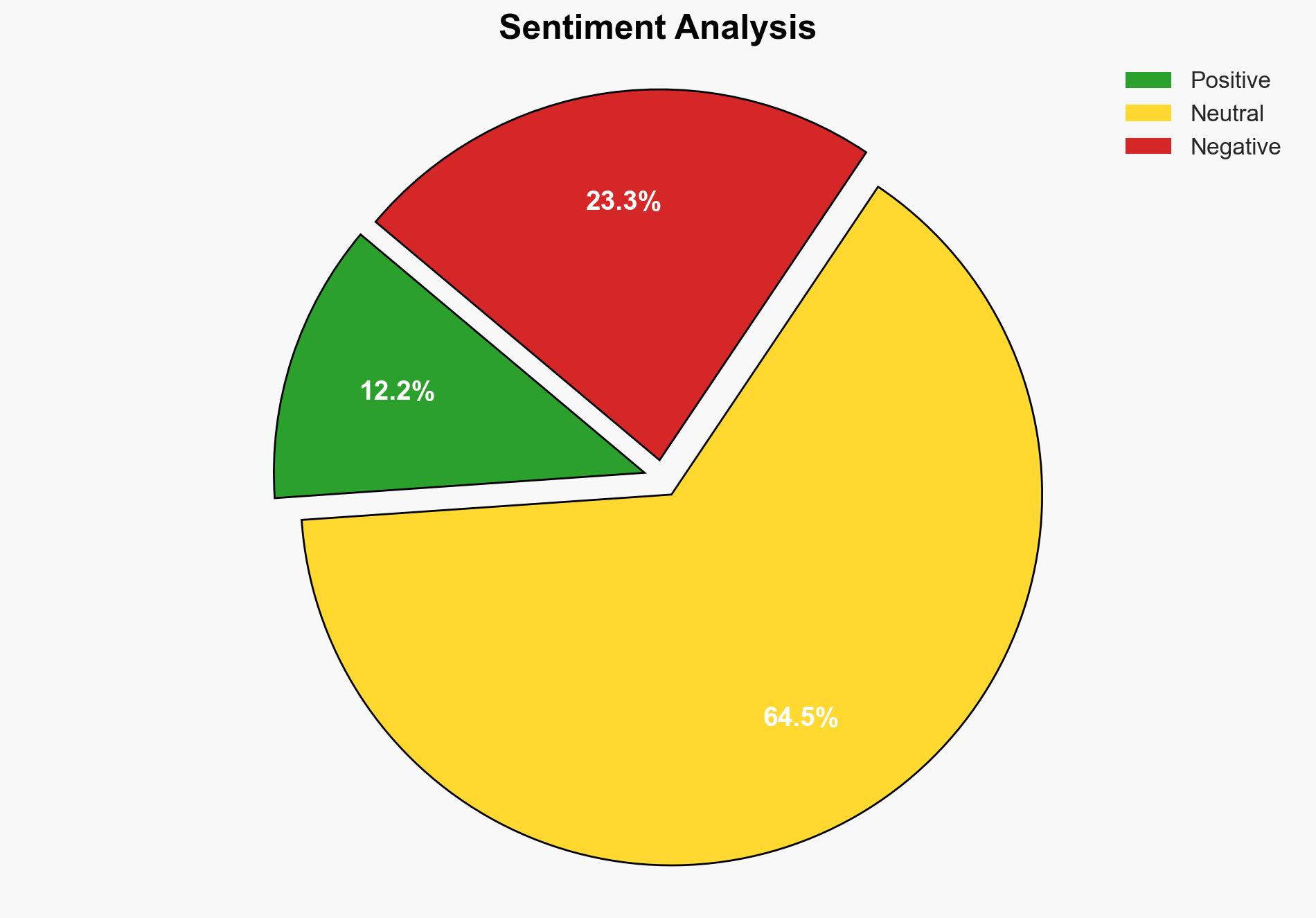Nasser Hospital strike survivor saw friend ‘flying’ through the air – ABC News (AU)
Published on: 2025-03-24
Intelligence Report: Nasser Hospital strike survivor saw friend ‘flying’ through the air – ABC News (AU)
1. BLUF (Bottom Line Up Front)
The recent missile strike on Nasser Hospital in Gaza resulted in significant casualties and infrastructural damage. The attack was reportedly aimed at eliminating Ismail Barhoum, a key figure in a militant group. The strike has exacerbated the already dire medical situation in Gaza, leading to a critical shortage of medical supplies and further destabilizing the region. Immediate humanitarian assistance and strategic diplomatic interventions are recommended to mitigate the crisis and prevent further escalation.
2. Detailed Analysis
The following structured analytic techniques have been applied for this analysis:
General Analysis
The missile strike on Nasser Hospital has intensified the humanitarian crisis in Gaza. The attack, targeting Ismail Barhoum, led to the destruction of critical medical infrastructure, including the surgical ward and oxygen department. The incident highlights the ongoing conflict’s impact on civilian infrastructure and the challenges faced by medical personnel operating under threat. The involvement of international humanitarian organizations, such as the International Committee of the Red Cross, underscores the global concern for the situation.
3. Implications and Strategic Risks
The strike poses significant risks to regional stability and international relations. The destruction of medical facilities could lead to a public health crisis, exacerbating the humanitarian situation. The potential for further military escalation remains high, with reports suggesting preparations for a major offensive. This could lead to increased civilian casualties and further strain international diplomatic efforts. Additionally, the disruption of humanitarian operations may hinder relief efforts, complicating the response to the crisis.
4. Recommendations and Outlook
Recommendations:
- Facilitate immediate humanitarian aid to address medical supply shortages and support hospital operations.
- Engage in diplomatic efforts to de-escalate tensions and promote a ceasefire agreement.
- Enhance monitoring and reporting mechanisms to ensure accountability and transparency in conflict zones.
Outlook:
In the best-case scenario, diplomatic interventions could lead to a ceasefire and stabilization of the region. The worst-case scenario involves further military escalation, resulting in increased casualties and humanitarian crises. The most likely outcome is a continued cycle of violence with intermittent diplomatic efforts, requiring sustained international engagement to prevent further deterioration.
5. Key Individuals and Entities
The report mentions significant individuals and organizations, including Ismail Barhoum, Mohammed Jihad Al Rawyda, and Marwan El Hamss. The International Committee of the Red Cross and the United Nations are also key entities involved in the response to the crisis.





